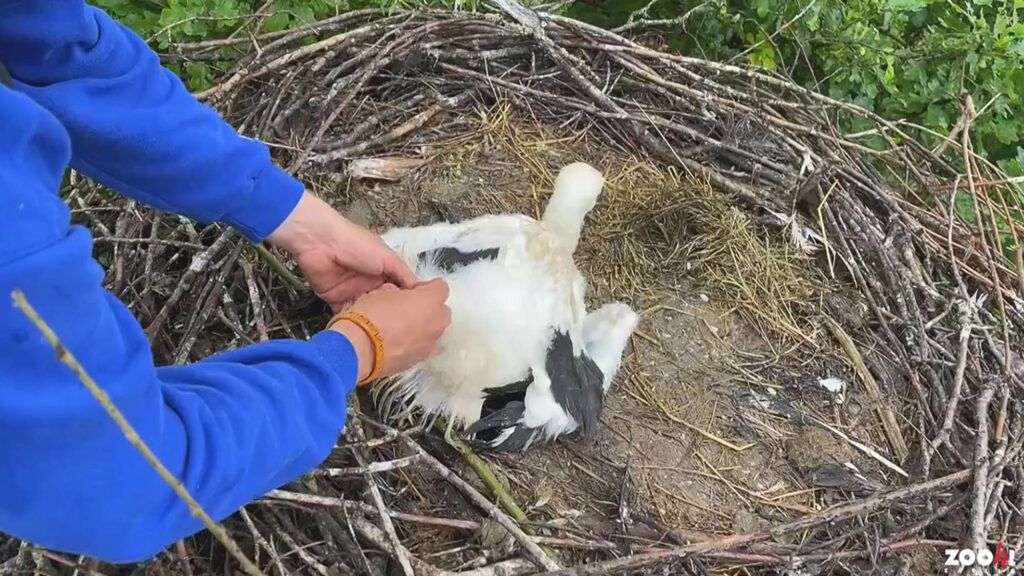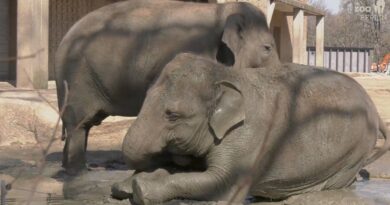Fire Brigade Called In To Help Swiss Zoo Tag 25 Storks Whose Parents Made Their Nests High Up In The Trees
This is the moment a firetruck and its extendable platform normally used for emergencies is used to lend a hand to the Zurich Zoo in tagging 25 newly arrived storks – many of which were born in nests at dizzying heights.
During the annual banding of the white stork offspring (Ciconia ciconia) Zurich Zoo used a little help from the fire brigade and successfully tagged more than two dozen chicks.
Each stork was given a unique number which is aimed to enable researchers to successfully identify and distinguish them in the future.
The number of storks tagged this year was considerably lower than last year’s (2020) when 40 storks were tagged and even lower than in 2018 when 44 were tagged.
Zurich Zoo said in a statement that they believe numbers were much higher last year because of the exceptionally warm weather.
The zoo added that the warm weather increases the likelihood of young storks surviving and as a result in 2018 and 2020 an unusually large number of the birds were tagged.
When fully grown these young storks will measure between 100–115 centimetres (39–45 inches) from beak to tail and have wingspans of 155–215 centimetres (61–85 inches).

The birds being monitored by Zurich Zoo are a wild colony that are tagged so that their migration patterns can be monitored by researchers.
The stork population in Switzerland has declined sharply since the second half of the 19th century due to illegal hunting, heavy industrialization and the associated pollution, as well as habitat loss.
The white storks almost went extinct in Switzerland in the middle of the 20th century, but the population was saved thanks to a successful reintroduction programme by the Altreu stork settlement and institutions such as the Basel Zoo and Zurich Zoo.
Today Switzerland counts approximately 350 free-flying breeding pairs of storks.
In the past, storks would usually migrate to Africa for the winter, however, GPS data transmitters have now revealed that about 70 percent of Swiss storks are now spending their winters in Spain instead, while the other 30 percent head in the direction of Gibraltar.
Due to this change in migration patterns, their flight to Switzerland is considerably shorter and fewer birds are lost along the way.



